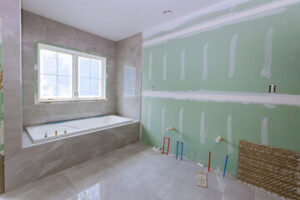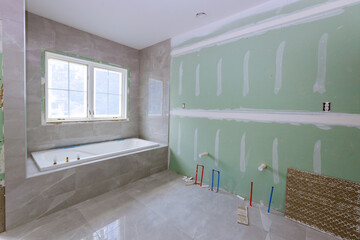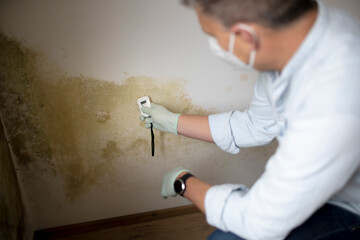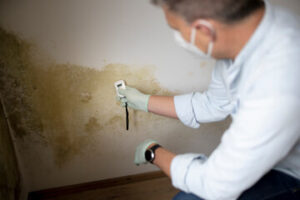Bathroom Remodeling Jacksonville FL is a great way to add value to your home. It’s also a chance to incorporate unique design elements that reflect your style.
Contractors often subcontract out work, including drywall, painting, and tiling. Discussing these details with your contractor early on in the project is important.

Whether you’re doing a quick makeover to freshen the look or tackling a complete overhaul, you should budget for unforeseen expenses. Contractors say that no remodel is smooth sailing and that a cushion of 20% should be added to your project estimate to cover anything that comes up. This is especially true when remodeling a bathroom, where hidden issues like mold and water damage can drive costs up unexpectedly.
The best way to save on bathroom renovation costs is by planning ahead. Take time to research options and keep a digital ideas file with photos of your favorite tile patterns, fixture styles, layouts and color schemes. This will help you determine your budget and stay on track.
When estimating your budget, keep in mind that some projects will require professional installation, such as electrical or plumbing. It’s worth it to hire a pro to avoid costly mistakes and ensure your bathroom is safe and functioning properly for years to come.
Many homeowners are able to reduce costs by sticking with the same bathroom layout. They may, for instance, opt to replace the tub/shower surround instead of tearing it out and installing a new one. Or they may choose to repaint the walls instead of re-tile, which will still give them a fresher look for less money.
It’s also a good idea to consider financing options for your bathroom remodel. Depending on your home equity, you may be able to get a low- or no-interest loan through your mortgage or home equity line of credit. Alternatively, there are a number of balance transfer credit cards with 0% APR that can offer an interest-free period for up to 18 months.
The design of the bathroom is an important part of any remodeling project. It needs to be functional and comfortable while also looking good. For this reason, you should plan carefully before beginning the remodel. Some things to consider include maximizing space, installing lighting fixtures, and using bright colors.
There are many ways to improve your bathroom’s layout and design. These include re-tiling, moving the toilet or sink, relocating the shower and bathtub, and increasing storage. However, a lot of these changes require a building permit or may alter the plumbing lines.
It’s also important to choose durable materials that can withstand the moisture of a bathroom. This is especially true if you’re planning on changing the wall tiles or adding a tub/shower. If you’re not sure what type of materials to use, consult a professional or do some research online. There are several different materials available that can withstand a wet environment, so you don’t have to worry about your new bathroom becoming damaged or rotting.
Another factor in deciding on the best layout for your bathroom is considering its size. If you have a small bathroom, it’s important to maximize space and use clever storage solutions. For example, installing tall cabinets and shelving can free up floor space for a more spacious look. You can also use light-colored paints to make the room look bigger and brighter.
As you’re designing your bathroom, it’s also worth thinking about the future and incorporating some elements of Universal Design (i.e. aging in place). This isn’t something that everyone needs to do, but it is becoming increasingly popular. Depending on your family’s needs, you might want to consider things like putting in blocking in the walls for future support bars or installing a grab bar by the toilet.
If your bathroom remodel is going to involve changing the layout of the room, it’s important to plan for the work ahead of time. For example, if you want to move the toilet or sink, you’ll have to consider the location of plumbing pipes and whether those are in the best place for your new design. Moving these items can require rerouting pipes and dropping walls, which add to the overall cost of your renovation.
Changing your design will also require rethinking how much lighting you want, and whether that means adding more recessed light or installing a vanity light. It’s a good idea to have these details worked out before starting the project, as changing your plans can delay contractors and create more hidden expenses.
One other thing to keep in mind is that if you live in an area with a homeowners or condo association, they may have rules about renovations that need to be followed. They might require an alteration agreement and require a licensed general contractor to handle the work. This process can take 30 to 90 days, so it’s worth planning ahead for.
Some changes don’t need to go through this process, but if you’re going to change the layout of your bathroom or alter any plumbing fixtures, you’ll need to make sure you have a permit. This can also be a requirement for a full gut renovation, and it’s important to talk with your builder about what you’re trying to accomplish. They can help you determine if you need a permit and what the requirements are for that particular city or county.
Bathrooms require more electrical work than other rooms in the home. Having a licensed and experienced contractor install or relocate your electrical outlets is crucial for ensuring compliance with building code.
A bathroom renovation is a great opportunity to hide unsightly outlets or add extras to suit your needs, like recessed lighting or a dimmer switch. If you decide to hide your outlets, consider hiding them behind medicine cabinets or tucked under the vanity cabinet (a popular solution in kitchens). Outlets that fade into the background are less of an eyesore and look much more streamlined than those that pop out like sore thumbs.
If your bathroom remodeling plans include moving the location of your sink, toilet or shower, it’s essential to consult a plumbing professional to ensure the existing plumbing can handle the load of the new fixtures. Trying to move the location of plumbing or electrical fixtures without proper expertise can result in costly mistakes and a messy outcome.
Another essential item to consider is whether your bathroom remodeling project requires a permit and inspection. Some counties and cities do not require a permit for a bathroom remodel, but it is important to check with your local building department to make sure. Getting the required permits can take a bit of time and money, so plan accordingly.
Before starting your bathroom remodeling project, remove or protect furniture and valuables from dust and debris. It’s also a good idea to make a list of all the materials and tools you will need for your renovation. For example, a wet-dry shop vac is an excellent tool to have on hand to help clean up water leaks or other unexpected messes.
If you are remodeling your bathroom to add a shower or tub, it’s important that your flooring is moisture resistant. Tile is a popular option in bathrooms due to its durability and ability to resist water damage.
Other options for the floor of your new bathroom include wood, natural stone and concrete. Concrete is less common than the other options, but it is a great choice for homeowners who want to make their bathroom look more modern and luxurious. Concrete floors can be stained any color and buffed to a variety of finishes. Like tile, concrete floors are also moisture resistant and durable.
Depending on how much of a remodel your bathroom is, you may need to remove the existing flooring in order to install the new layout of your shower or tub. This can be a large job and if done incorrectly, could lead to mold and mildew problems. During this time, it’s good to have a plan for material disposal.
If you decide to hire a general contractor to do your bathroom remodeling, ask for proof of licensing. You should also check with your local municipality to find out the requirements for contractors in your area. Also, if your contractor plans to subcontract some of the work, you should find out who they will be using and make sure that these subcontractors have their own licenses and are insured. This will help to protect you as the homeowner and ensure that all work is done to code. Also, be sure to check with your home owners or condo association before beginning any work on your remodel. Most associations require permits for any changes to the property.



 Detection
Detection